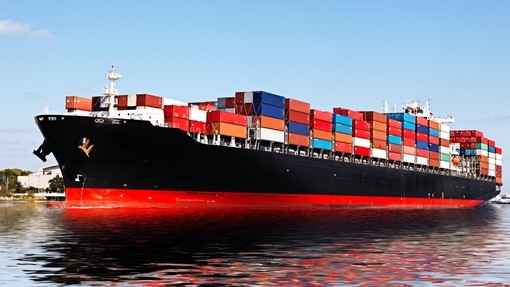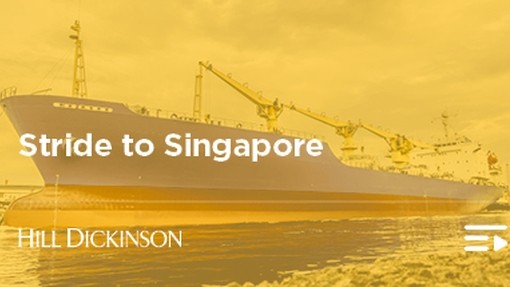Nautical Challenge Ltd -v- Evergreen Marine (UK) Limited [2022] EWHC 206 (Admlty)

Details
The ongoing dispute between ALEXANDRA 1 and EVER SMART has been heard by the courts for a fifth time. In this hearing, the judge was required to re-determine matters of apportionment.
Factual Background
On 11 February 2015, a collision occurred between ALEXANDRA 1, a laden VLCC and EVER SMART, a laden container vessel. The collision occurred just outside the dredged channel by which vessels enter and exit the port of Jebel Ali in the United Arab Emirates.
At about 22:00 on 11 February 2015, ALEXANDRA 1, which was inbound to Jebel Ali, was instructed that a pilot would board at 23:15 and that she should be at buoys no.1 at that time. The pilot was on board EVER SMART, which was navigating along the narrow channel, outbound from Jebel Ali, and proceeding to buoys no.1 Port Control advised ALEXANDRA 1 that once EVER SMART was clear she could enter the channel.
At about 23:26, the master of ALEXANDRA 1 overhead a conversation which he mistakenly thought was between EVER SMART and Port Control. As a result, he thought that EVER SMART was to turn to port at the end of the narrow channel. At about 23:38, ALEXANDRA 1 would have turned to starboard towards the channel but did not do so because of her master’s mistaken understanding of EVER SMART’s intentions. Instead, she continued to head across the approaches to the channel very slowly. The master of ALEXANDRA 1 was concerned that EVER SMART was not turning to port as expected and so put the engines full astern, but this did not avoid a collision.
EVER SMART was slightly to port of mid-channel. Before leaving the bridge, the pilot advised the master that there was a vessel to port and that he should take care. However, EVER SMART never regained the starboard side of the channel. At about 30 seconds before the collision, Port Control and the pilot advised EVER SMART to go to hard starboard. Her helm was put starboard, but it was too late. The speed of EVER SMART at collision was 12.4 knots, whereas the speed of ALEXANDRA 1 was 2.4 knots.
A trial took place in the Admiralty Court in January 2017 and in a judgment dated 13 March 2017 the court held that the crossing rule did not apply. The court held that the navigation of ALEXANDRA 1 was governed by the requirements of good seamanship and the navigation of EVER SMART by the narrow channel rule. The court apportioned liability for the collision 80/20 in favour of ALEXANDRA 1. Further detail can be found here: Nautical Challenge Ltd -v- Evergreen Marine (UK) Ltd [2017] EWHC 453 (Admlty).
The first instance decision was appealed, but, on 5 October 2018, the Court of Appeal dismissed the appeal. Detail of the Court of Appeal decision can be found here: Evergreen Marine (UK) Limited -v- Nautical Challenge Limited [2018] EWCA Civ 2173.
On 29 January 2019, the quantum of the respective claims was assessed. The court apportioned liability 80/20 in favour of ALEXANDRA 1 and held that the recoverable loss of ALEXANDRA 1 was US$9,308,594.71 and EVER SMART US$2,531,373.71. Further detail can be found here: Nautical Challenge Limited -v- Evergreen Marine (UK) Limited [2019] EWCA Civ 2173.
Permission to appeal was granted by the Supreme Court and in a judgment dated 19 February 2021 the Supreme Court allowed the appeal. The Supreme Court held that ALEXANDRA 1 was the give-way vessel and her navigation was governed by the crossing rule and the navigation of EVER SMART was governed by both the crossing rule and the narrow channel rule. As a result, the Supreme Court said that it was necessary for the first instance judge to re-determine all matters of apportionment. Detail of the Supreme Court decision can be found here: Evergreen Marine (UK) Limited -v- Nautical Challenge Ltd [2021] UKSC 6.
Legal Analysis
Rule 9 of the International Regulations for Preventing Collisions at Sea 1972 sets out the rules for narrow channels: crossing situations are covered by Rule 15, action to be taken by the give-way vessel is laid down in Rule 16 and Rule 17 sets out the action to be taken by the stand-on vessel.
In his judgment, Teare J explained that prior to the Supreme Court’s decision he would have considered that a crossing vessel had to be on a settled or defined course although he also said that the point was not argued before him at the first hearing. The Supreme Court considered it sufficient that the vessels were approaching each other on a steady bearing (over time).
The judge then considered the circumstances in which, as held by the Supreme Court, there may be an ‘express stipulation’ or ‘compelling necessity’ to override or disapply the crossing rule even though the vessels were crossing. The Supreme Court did not explain what constituted an ‘express stipulation’, but said that an example of a ‘compelling necessity’ was where one vessel is navigating in a narrow channel and another vessel is preparing and intending to enter it and already shaping (i.e. adjusting her course and speed to do so) on her final approach.
The judge inferred from the Supreme Court judgment that where two vessels are navigating in the same narrow channel the narrow channel rule is such an ’express stipulation’. As regards a ‘compelling necessity’, the judge referred to the Supreme Court’s example of a vessel on her final approach and shaping to enter the channel, when the crossing rule, which previously applied, no longer applies because the vessel ‘is already having her navigation determined by the need to be in compliance with rule 9(a) when she reaches the entrance, that is, to arrive at her starboard side of it, on a course which enables her to continue on her starboard side of the channel’.
The judge also considered that the Supreme Court had in mind that either (i) there was a compelling necessity when a vessel was on her final approach and shaping to enter the channel, when the crossing rule, which previously applied, no longer applied because there is no longer a crossing situation which involved a risk of collision or (ii) once a vessel is on her final approach she is, in sense, committed to those adjustments of course and speed which are necessary to enable her to arrive at the entrance to the channel and on the starboard side of it so that she no longer has the freedom of action required to keep out of the way of the other vessel.
The judge held that he favoured the first explanation as he considered it to be consistent with the reasoning in the earlier cases, of Kulemesin -v- HKSAR [2013] 16 HKCFA 195, The Canberra Star [1962] 1 Lloyd’s Rep 24 and The Kaiser Wilhelm der Grosse [1907] P.36 and 259, in which the crossing rule did not apply.
In re-determining the apportionment of liability, the judge compared the relative causative potency and blameworthiness of the two vessel’s faults, and stated as follows:
- Both vessels contributed to the fact that a collision took place. ALEXANDRA 1, by failing to make a substantial turn to starboard to keep well clear of EVER SMART, in breach of Rules 15 and 16, permitted a close quarters situation to develop close to the entrance to the channel. EVER SMART failed to keep to the starboard side of the channel, in breach of Rule 9, and failed to take appropriate action to avoid a collision, pursuant to Rule 17(a)(ii) or (b). However, ALEXANDRA 1’s contribution, being the earlier fault that allowed the close quarters situation to develop, was the greater of the two.
- In respect of each vessel’s contribution to the damage caused by the collision, the speed of EVER SMART at collision, of 12.4 knots, was likely to have made a far greater contribution to the damage than the speed of ALEXANDRA 1, of 2.4 knots.
- The causative potency of EVER SMART’s faults exceeded the causative potency of ALEXANDRA 1’s faults. The extent to which EVER SMART’S contribution to the damage exceeded ALEXANDRA 1’s contribution to the damage was greater than the extent to which ALEXANDRA 1’s contribution to the fact of the collision exceeded EVER SMART’s contribution to the fact of the collision.
- In relation to relative blameworthiness, the faults of EVER SMART were much more culpable than those of ALEXANDRA 1. EVER SMART’s breach of the narrow channel rule must have reinforced ALEXANDRA 1’s misunderstanding of EVER SMART’s intentions and to that extent there was mitigation for ALEXANDRA 1’s breach of the crossing rule. There was no such mitigation available for EVER SMART’s breach of the narrow channel rule. The judge was also critical of a lack of lookout on the part of EVER SMART.
The judge held that in circumstances where the faults of EVER SMART were both more causatively potent and more blameworthy than those of ALEXANDRA 1, there was a clear preponderance of fault on the part of EVER SMART. The judge revised the apportionment and decided that EVER SMART should bear 70% of the damage caused by the collision and that ALEXANDRA 1 should bear 30%.
Comment
This case serves as a reminder of the following key principles from the decision of the Supreme Court:
- In order for the crossing rule to apply, the give way vessel does not have to be on a settled or defined course.
- The crossing rule can be overridden or disapplied by express stipulation or where there is a compelling necessity to do so; and
- The crossing rule and narrow channel rule can apply at the same time.
However, as pointed out by the judge, the effect of the Supreme Court’s ruling and its use of the ‘compelling necessity’ principle means that where a collision occurs between a vessel approaching a narrow channel, intending to proceed along it, and a vessel exiting the channel, it is inevitable that there will be an enquiry as to whether the former vessel was in fact “on her final approach” and “shaping to enter the channel”. If she is, the crossing rule does not apply. If she is merely approaching the channel and intending to proceed along it, the crossing rule will continue to apply.






